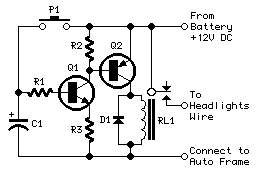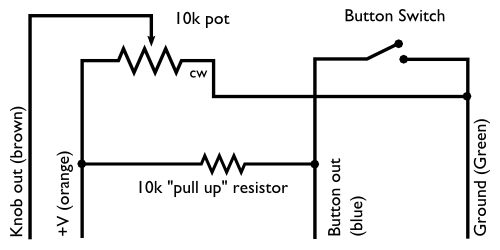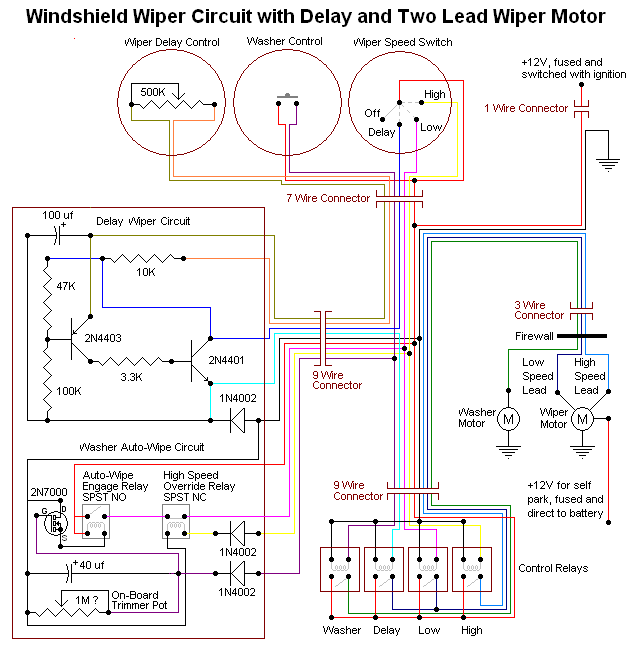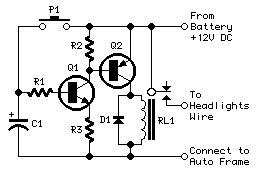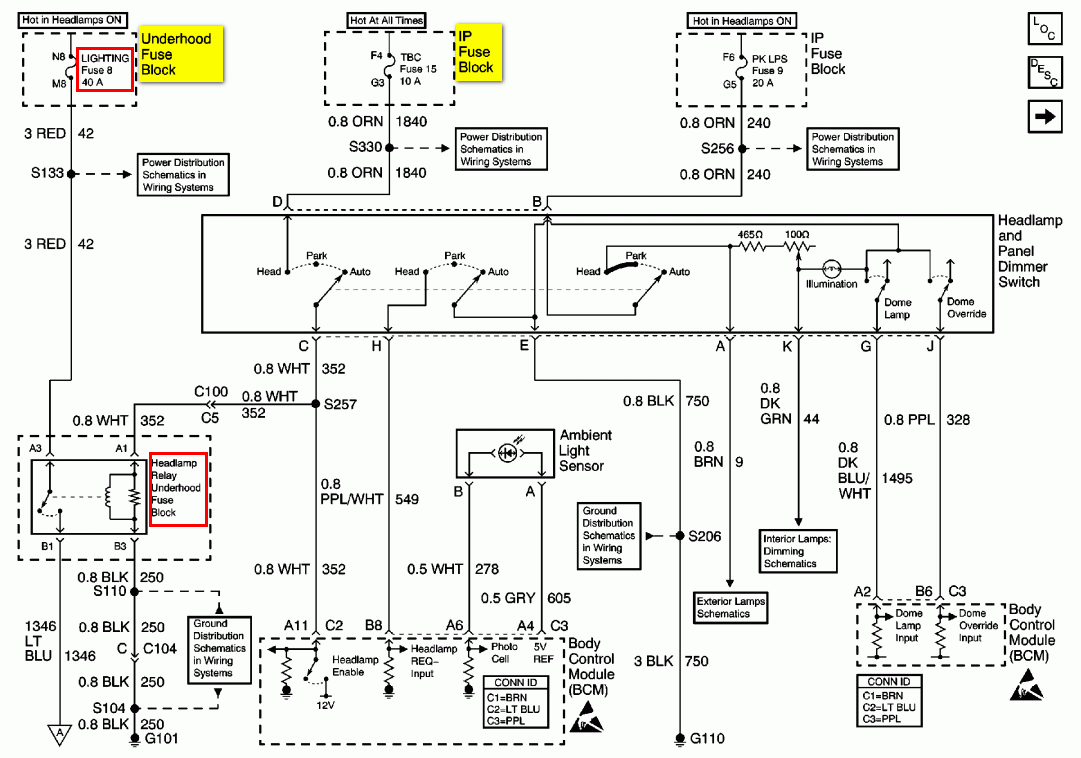
headlights 1967 and 1958 Cadillac Eldorado
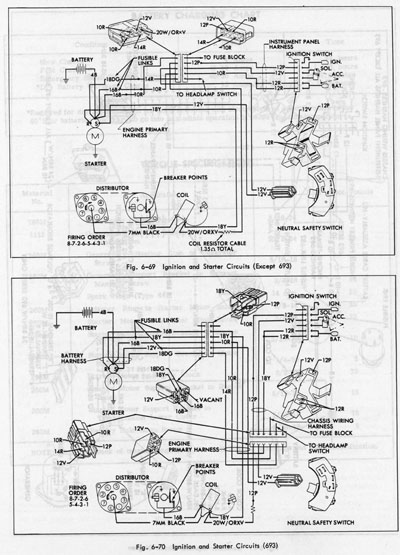
The system operates solely on vacuum. Upon inspection of the vacuum hoses, two brittle hoses were found that ran through the firewall to the headlight switch, where a slight hissing sound was noticeable when the lights were activated. Touching these hoses intensified the sound. When attempting to press them onto the switch connector, one hose began to disintegrate. Consequently, all hoses connected to the switch were replaced and rerouted through the firewall using rubber insulation. There are three hoses: one for vacuum feed (yellow), one for opening the doors (green), and one for closing (red). Additionally, the red hose behind the firewall, which connects to a T-connector supplying vacuum to the headlight door actuators, was replaced. Previous replacements had been made for the two hoses following the T-connector. With the new hoses installed, the headlight doors now operate almost simultaneously and quickly. It is advisable to check and replace all related vacuum hoses when experiencing issues with headlight doors, as the hoses leading to the switch can deteriorate significantly over time. Notably, these three hoses appear to be made from a different material than the other vacuum hoses, which remain in much better condition. A video showcasing the headlight doors in action is available, though they may appear slightly out of sync due to temperature variations and engine idle. The Eldorados were photographed while outside the garage, with plans to display the images in the children's room. Despite recent warm weather, winter is not over in Austria, with more snow expected next week, leaving the cars in the garage awaiting April.
The vacuum-operated headlight door system is critical for the proper functioning of the vehicle's lighting mechanism, enhancing visibility and safety during nighttime driving. The vacuum hoses play an essential role in this system, as they transport vacuum pressure from the engine to the actuators controlling the headlight doors. The yellow hose serves as the primary vacuum feed, supplying necessary pressure to activate the system. The green hose is responsible for opening the doors, while the red hose facilitates their closing mechanism.
When inspecting the vacuum hoses, particular attention should be paid to their condition, as exposure to heat, humidity, and age can cause them to become brittle and prone to failure. The deterioration of these hoses can lead to vacuum leaks, resulting in improper operation of the headlight doors, which may open or close inconsistently. In this case, the older hoses were found to be significantly degraded, necessitating their replacement to restore optimal functionality.
The rerouting of hoses through rubber insulation is a best practice that protects them from environmental factors and mechanical wear, extending their lifespan. The T-connector's role in distributing vacuum pressure to the actuators is also crucial, as it ensures that both headlight doors operate in unison.
This system's performance can be influenced by various factors, including engine idle speed and ambient temperature, leading to slight variations in the timing of door operation. Regular maintenance, including the inspection and replacement of vacuum hoses, is essential for ensuring the reliability and efficiency of the headlight door system.The system is driven by vacuum only, so I started to look through the vacuum hoses once again. I had already exchanged a couple of them last year. I found another two brittle ones going through the firewall to the headlight switch from where a slight hissing sound was coming when the lights were on. When I touched them the hissing would become even more noticeable. I then tried to press them onto the connector of the switch and the first hose began to crumble into pieces. So I replaced all the hoses on the switch and rerouted them through firewall through the rubber insulation.
There are three hoses. One is the vacuum feed (the one in the middle - I think it was yellow), one is for opening the doors (green) and one for closing (red). I also replaced the red hose behind the firewall going to a T-connector from where the vacuum is fed to the headlight door actuators.
I had already replaced the two hoses after the T-connector in the past. With all new hoses in place the doors now perform almost simultaneously and quite fast. So when you run into troubles with your headlight doors, check and replace all the according vacuum hoses first. Its amazing how brittle the hoses going to the headlight switch inside the car can become over the years.
It looks like they used a quite different material for these three hoses, as all other vacuum hoses are in much better shape and do not show any sign of deterioration at all. You can see a video of the headlight doors in action below. On this video they are slightly out of sync. As it looks like they are slightly different every day, depending on temperature and engine idle. While the Eldorados were outside the garage my wife used the opportunity to shoot a couple of pictures she had in her mind, which she is planning to hang into the kids room.
Cant wait until the medium format film is back from the photo lab. Below you can see only some digital snap shots I took. Despite the last two unusual warm and beautiful days unfortunately winter is not over yet here in Austria, as some more snow is predicted for next week and the cars are back in the garage desperately waiting for April to come. 🔗 External reference
The vacuum-operated headlight door system is critical for the proper functioning of the vehicle's lighting mechanism, enhancing visibility and safety during nighttime driving. The vacuum hoses play an essential role in this system, as they transport vacuum pressure from the engine to the actuators controlling the headlight doors. The yellow hose serves as the primary vacuum feed, supplying necessary pressure to activate the system. The green hose is responsible for opening the doors, while the red hose facilitates their closing mechanism.
When inspecting the vacuum hoses, particular attention should be paid to their condition, as exposure to heat, humidity, and age can cause them to become brittle and prone to failure. The deterioration of these hoses can lead to vacuum leaks, resulting in improper operation of the headlight doors, which may open or close inconsistently. In this case, the older hoses were found to be significantly degraded, necessitating their replacement to restore optimal functionality.
The rerouting of hoses through rubber insulation is a best practice that protects them from environmental factors and mechanical wear, extending their lifespan. The T-connector's role in distributing vacuum pressure to the actuators is also crucial, as it ensures that both headlight doors operate in unison.
This system's performance can be influenced by various factors, including engine idle speed and ambient temperature, leading to slight variations in the timing of door operation. Regular maintenance, including the inspection and replacement of vacuum hoses, is essential for ensuring the reliability and efficiency of the headlight door system.The system is driven by vacuum only, so I started to look through the vacuum hoses once again. I had already exchanged a couple of them last year. I found another two brittle ones going through the firewall to the headlight switch from where a slight hissing sound was coming when the lights were on. When I touched them the hissing would become even more noticeable. I then tried to press them onto the connector of the switch and the first hose began to crumble into pieces. So I replaced all the hoses on the switch and rerouted them through firewall through the rubber insulation.
There are three hoses. One is the vacuum feed (the one in the middle - I think it was yellow), one is for opening the doors (green) and one for closing (red). I also replaced the red hose behind the firewall going to a T-connector from where the vacuum is fed to the headlight door actuators.
I had already replaced the two hoses after the T-connector in the past. With all new hoses in place the doors now perform almost simultaneously and quite fast. So when you run into troubles with your headlight doors, check and replace all the according vacuum hoses first. Its amazing how brittle the hoses going to the headlight switch inside the car can become over the years.
It looks like they used a quite different material for these three hoses, as all other vacuum hoses are in much better shape and do not show any sign of deterioration at all. You can see a video of the headlight doors in action below. On this video they are slightly out of sync. As it looks like they are slightly different every day, depending on temperature and engine idle. While the Eldorados were outside the garage my wife used the opportunity to shoot a couple of pictures she had in her mind, which she is planning to hang into the kids room.
Cant wait until the medium format film is back from the photo lab. Below you can see only some digital snap shots I took. Despite the last two unusual warm and beautiful days unfortunately winter is not over yet here in Austria, as some more snow is predicted for next week and the cars are back in the garage desperately waiting for April to come. 🔗 External reference
